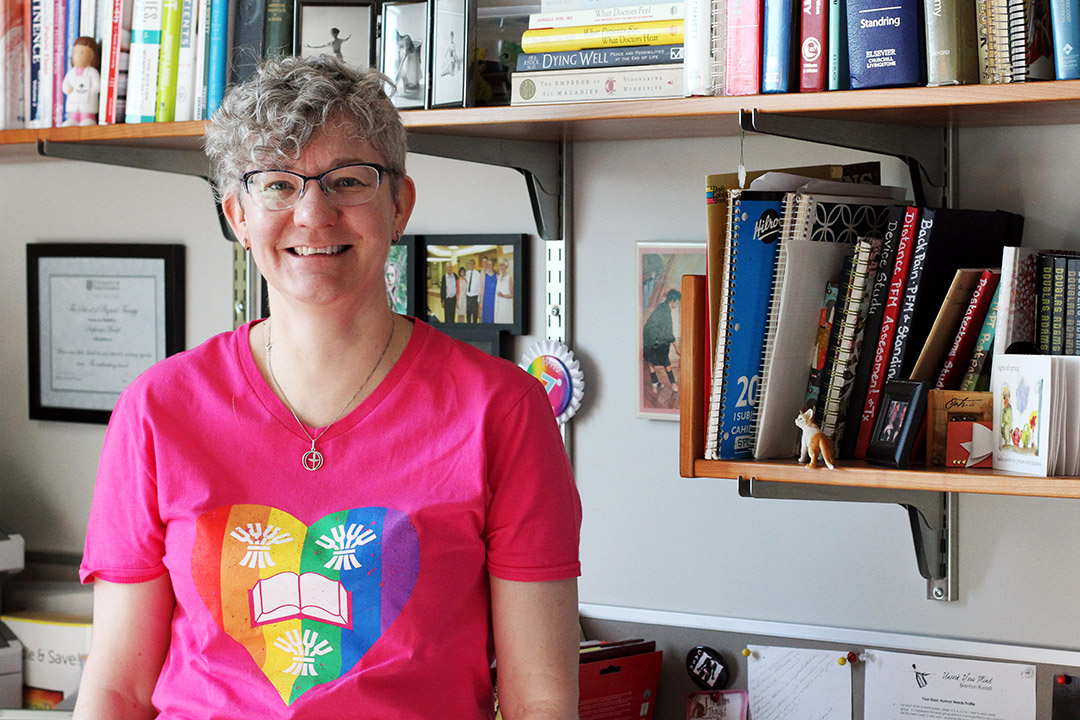
Role models for queer youth are key
In celebration of the upcoming Saskatoon Pride Festival, Stéphanie Madill, assistant professor of physical therapy, talks about progress made and the importance of queer youth having role models.
By UNIVERSITY COMMUNICATIONSStéphanie Madill is an assistant professor of physical therapy in the School of Rehabilitation Science. Madill grew up in Edmonton and has worked on campus since 2011. Currently she is co-leading a research team that is striving to improve health care for trans people in Saskatchewan.
Madill says her top three passions are needlework, dance (particularly ballet) and the health and well-being of people who are LGBTQ2S+ (and always her three cats and partner Fern).
In her own words, Madill explained the importance of Pride and why it is important to be a part of a community that celebrates and supports those who are part of the LGBTQ2S+ community.
I came out in 1986 and when I attended my first Pride parade in the early 1990s there were more protesters than spectators. Some of us wore masks because it was still legal to discriminate against people who were LGBTQ2S+ and we were afraid of losing our jobs, families or homes.
Society has changed tremendously, but we LGBTQ2S+ers are mostly still invisible. This means that young people who are LGBTQ2S+ have difficulty finding role models and they still regularly face anti-LGBTQ2S+ slurs. They have to figure out how to negotiate their adult lives as LGBTQ2S+ individuals without guidance or mentorship. It is important for me to be out and visible on campus to be an example for both LGBTQ2S+ and straight students, and to indicate that I am available as a mentor.
